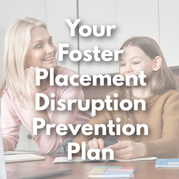|
For foster parents, creating a home that is trauma-informed is essential to helping children heal and grow. Trauma-informed care means being aware of the potential impact of trauma on a child’s development and actively working to build trust, safety, and stability. As a foster parent, understanding how to create an environment that fosters healing can help your family thrive. What Makes a Home Trauma-Informed? A home that is trauma-informed prioritizes physical and emotional safety. This means creating deescalation strategies when emotions are running high, establishing boundaries that are consistently enforced, avoiding triggers, and encouraging self-care practices like relaxation techniques or mindful activities like yoga. It also involves setting up routines so children know what to expect each day. Establishing consistent rules and expectations helps kids feel secure in their new environment because it gives them something familiar to cling on to during times of great change. It's important for foster families to understand the impact of traumatic experiences on kids' behavior. Trauma can manifest itself in many ways including aggression, hyperactivity, or withdrawal from social situations. Learning how to recognize signs of distress will help you be better prepared to respond appropriately in difficult situations. Creating a Safe Space in Your Home When creating a safe space in your home, work on minimizing external triggers that may set off negative emotions in your foster child. This includes avoiding overly stimulating environments like crowded malls or loud restaurants as often as possible, providing plenty of quiet places like bedrooms or isolated alcoves within the house where your foster child can retreat for comfort and privacy if feeling overwhelmed. Additionally, make sure all family members are aware of boundaries—both physical (such as no hitting) and emotional (such as no teasing). When everyone understands these boundaries, it’s easier for your foster child to feel safe within your home. Building Trust with Your Foster Child Trust plays an important role in developing relationships with your foster child. Focus on building trust through small gestures such as reading stories together at night, having regular meals as a family, or playing games together that promote bonding and connection. Get creative with activities like nature hikes or art projects! When kids feel safe enough to express themselves openly and honestly - without fear of judgement - they learn that they can depend on you as their caregiver even during the most challenging moments. Creating a trauma-informed home takes time but it’s worth the effort; by providing safety, consistency, structure and love you’re giving your foster child the tools they need to heal after experiencing trauma and disruption in their lives. Building trusting relationships between yourself and your foster child will take time but it will also bring tremendous rewards; by creating a supportive environment where everyone feels respected while cultivating healthy ways of expressing emotions you’ll provide your family with the foundation necessary for growth no matter how long they stay with you! More from Foster Mama
As a former foster youth, you may have been thrust into the world of adulthood without being adequately prepared for the financial challenges that come with it. While there are many aspects to consider when planning your own budget, the good news is that you can create an effective budget with little knowledge. In this blog post, we’ll be discussing how to create a basic personal budget so that you can get on track financially and move forward in life.
Start Tracking Your Income and Expenses Knowing where your money is coming from and where it is going each month is essential for creating any type of budget. To do this, start by listing out all of your income sources (such as wages from work or government benefits). Then create a list of all your expenses (rent/mortgage payments, food costs, transportation costs etc.). Make sure to include both fixed (those that stay the same every month) and variable expenses (those that change every month) like utilities and entertainment costs respectively. Once you have determined how much money is coming in and going out each month you can begin setting up your budget accordingly. Steps to Successful Budgeting
Tips:
Creating a basic personal budget does take some discipline and dedication, but it is possible! With some careful planning and consistent tracking of income and expenses, former foster youth can set themselves up for success financially despite having limited resources available at their disposal! So don’t be discouraged—take those first steps today towards setting yourself up financially for life! You won’t regret it! Good luck! |
AuthorI'm a foster mom, bio mom, working mom, special needs mom, busy mom. I'm also married to my high school sweetheart, I'm a proud 23-year childhood cancer survivor, and I'm passionate about serving my community. More from FosterMamaArchives
March 2023
Categories
All
|




 RSS Feed
RSS Feed